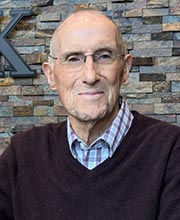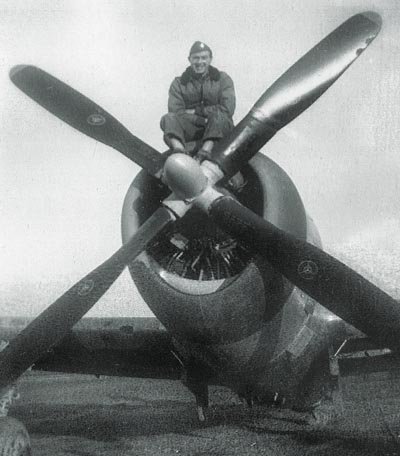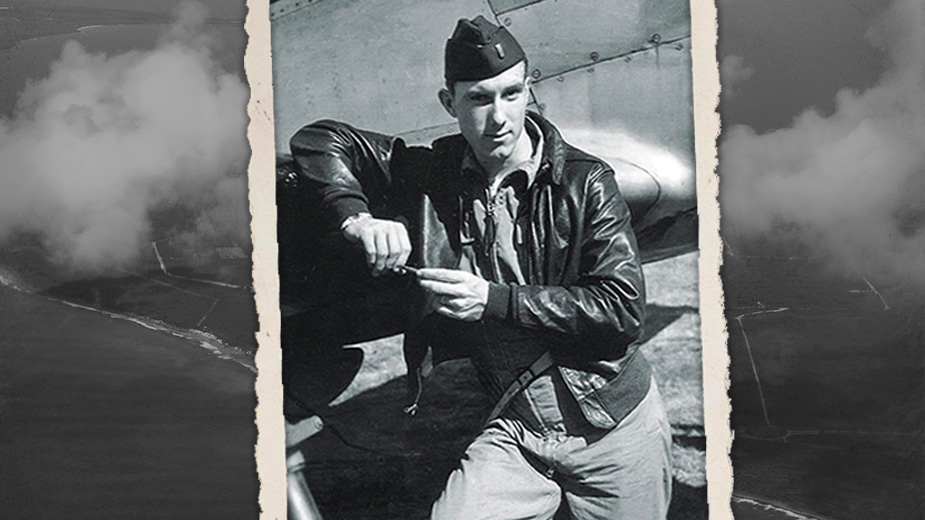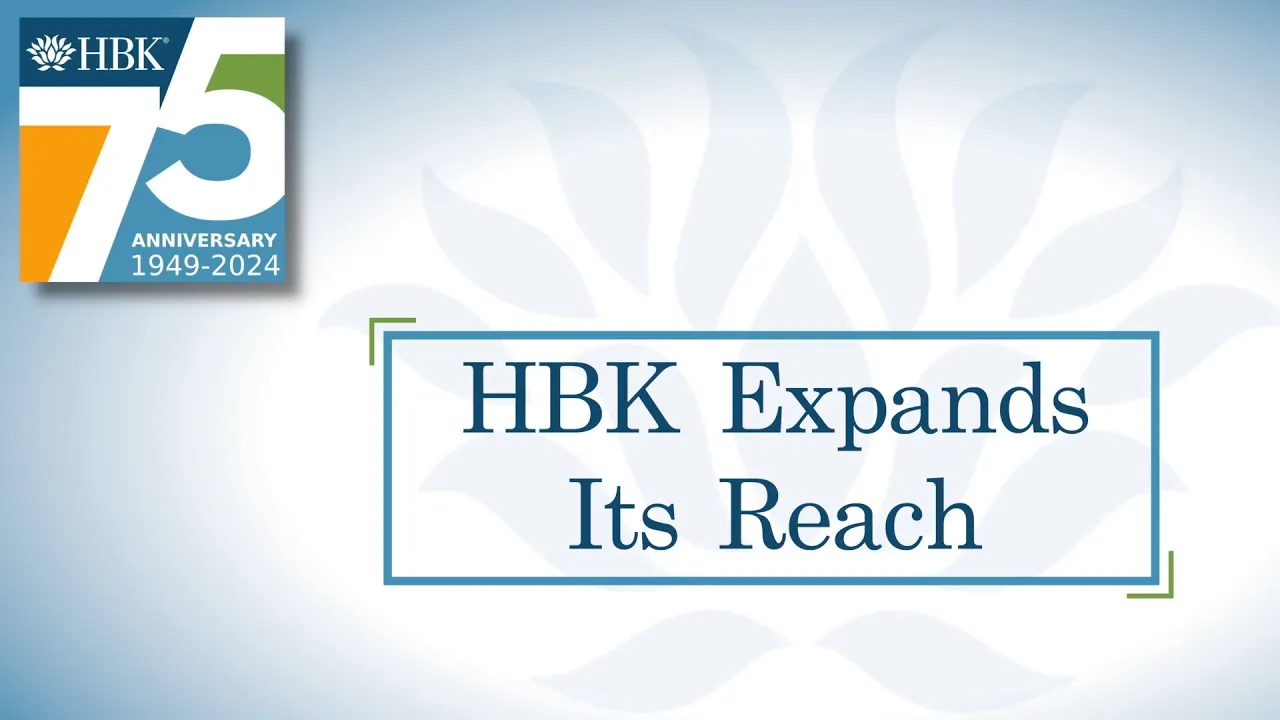Wally King Personifies the ‘Greatest Generation’
YOUNGSTOWN, Ohio – Wally King personifies a generation that struggled through the Great Depression, fought in the most devastating conflict in history, and participated in the largest economic expansion the world has ever known.
King – fit, active and astute – will turn 101 on Oct. 31. On a bright Friday morning, he strolls into the Canfield headquarters of HBK CPAs & Consultants, the firm he cofounded 75 years ago.
He needs no introduction, as office administrators and others in the lobby greet him as a celebrity, though he humbly shrugs off the attention. Through his vision, the firm he helped start with four staffers – Hill, Barth & King – has grown into a 700-employee accounting and business consulting company with 17 branch offices in Ohio, Pennsylvania, New York, New Jersey, Florida and Delhi, India.
“Every day was a learning experience,” King says, reflecting on his career. “You had a different client, a different assignment. You identified that client’s need, and you met that need.”
DEPRESSION AND WAR
King’s down-to-earth philosophy comes with a history rich in experience. Born Oct. 31, 1923, on North Mecca Street in Cortland, King attended school in the same building from first grade until his graduation in 1942. His father, who initially worked on the family farm in Mecca Township to the north, moved to Cortland to deliver coal and concrete to local business interests.

“I walked to school to the same building for 12 years,” he says.
During the Depression, King would take on any job that was available. “Every one of my peers mowed lawns, did odd jobs,” he recalls. On one occasion, he and another classmate spent a summer excavating the ground underneath a house to make way for a new basement. “We were using a tractor and a dirt scoop. We worked all summer taking the dirt out so they could build a basement. That’s what you call starting from the bottom,” he says with a laugh.
King graduated at age 17, seven months after the Japanese attack on Pearl Harbor and the United States’ entry into World War II. During that summer, he worked several jobs, eventually securing a clerk typist position for the Erie Railroad. His life would change dramatically when he was called up for active duty in January of 1943 and entered a program to train as a pilot.
“I’ve always wanted to fly – it was a passion,” King says. “I was trained as a fighter pilot, but that wasn’t my first choice. I wanted to fly multiengine aircraft.”
He says flying a single-engine fighter proved more exhilarating and he first was trained on a P-40 Warhawk aircraft, which by that time already was obsolete as newer, more effective aircraft rolled off assembly lines. In 1944, his unit was dispatched to England, where he was trained on one of the newest and fastest fighters, the P-51 Mustang.

Then, in late July, nearly two months after the Allies invaded Normandy, King was assigned P-51 duty on an airstrip just south of Utah Beach in France. He was in Paris when Charles de Gaulle led the Free French Army down the Champs Elysees during the liberation from Nazi occupation.
King returned to his P-51 squadron only to find that it was being deactivated. He was reassigned to a new unit flying P-47 Thunderbolts, an aircraft generally used for air-to-ground attacks. When he arrived, the squadron leader ordered King to fly the aircraft and land it, which he did. He flew his very first combat mission the next day. “Our mission was to support ground troops,” he says, bombing or strafing enemy supply convoys, tank brigades or railroad lines.
King would fly 74 missions before being shot down on his 75th, toward the end of the war. He bailed out, was captured, and treated for his injuries in a German hospital. He was then transported by a German ambulance and returned to Allied lines.
“There’s nothing glamorous about war,” King emphasizes, adding that it’s a point he drives home when he speaks to young people especially about the conflict. “It’s an evil, dirty business.”
PEACETIME AND BUSINESS GROWTH
Upon returning to the states after the conflict, King enrolled in Youngstown College – today Youngstown State University – while resuming his position as a railroad clerk. “I took a job in the freight yard checking cars at midnight so I could go to school during the day,” he says.
As a high school student, King became fascinated with numbers while taking a bookkeeping class. That experience led him to the college’s accounting department, where a fellow student informed him of an on-the-job training program that he was about to begin with Rowland Hill, a local certified public accountant with an office on the 13th floor of the Realty Building in downtown Youngstown.
“I decided that it would be a good thing to do, so I enrolled in the job-training program,” he recalls, after meeting with Hill in December of 1946. “It was a three-year program for $200 a month,” in which, under the G.I. Bill, the government would pay for the first six months of the year and the employer the last six months, he says. King began work at the firm at the end of January 1947.
He recalls his first day on the job, in which he was assigned to do a monthly closing for an air compressor company in Youngstown. The company, Dearing Compressor, still thrives today. “In those days, everything was primitive, everything was manual.” Other clients that first year included local supermarkets and small businesses throughout the region, he recalls.
Then, in 1948, Irl Hammonds left a position at Ernst & Ernst and joined the firm as a tax specialist. The following year, the company was renamed Hill & Hammonds. Hammonds also brought with him big connections, including major tax accounts such as Standard Slag and Edward DeBartolo Sr.
“He was really one of my great teachers. I had learned so much from him, not only specifics on taxes and auditing, but just as a human being,” King fondly says of Hammonds. “That’s where the education came. It was three years of on-the-job training.”
King never did obtain a degree. However, after three years of accounting experience, he was able to sit for the state CPA exam, which he passed in 1951. His was the 2,022nd license awarded in the state. “It was a rare commodity,” he says.
Meantime, the firm began to grow in stature as it began to handle larger accounts. In early 1955, however, Hammonds died from cancer, leaving open a place for a specialized tax professional at the firm. In August of 1955, King was introduced to Bill Barth – a tax accountant from Ernst & Ernst – during a meeting at Hill’s house in Poland. By the next month, the company was renamed Hill, Barth & King.
King reflects that there was never any comprehensive business plan or real business strategy that drove growth at the firm. Rather, he describes HBK’s simple knack for recognizing opportunities.
“You wanted to grow, you wanted to acquire new clients,” he says.
It was also important to differentiate HBK from other CPA firms. Among the goals to help diversify and grow the company was to attract bright, younger talent to the firm.
“I think we saw the need for having a more diverse staff,” King says. As new opportunities increased, so too did the need for additional professionals. “We had to have more people to cover more opportunities. Then we started having branch offices open,” he says.
Among the early expansions were in New Castle, Pa., after the company acquired a solo CPA practice there, and in Salem, Ohio, which was added after one year of working with Rowland Hill, King says.
“I went into Salem and opened an office in a local bank,” he says. “Eventually, we’d acquire clients, and banks would recognize that a lot of new businesses were being formed after the war,” he says.
These young companies needed help with tax preparation, record keeping, and better financial systems to measure performance, King says. Internally, however, there was often friction between Hill – known for his frugality and autocratic management style – and Barth, causing Barth to contemplate leaving the firm. At the same time, Hill expressed his intentions to retire the following year. A deal was structured so that Barth would remain with the firm and he and King would buy out Hill’s share. One condition was that Hill’s son, Richard, would join the company, leaving intact the Hill, Barth & King name.

“The first thing Bill Barth and I did after Rowland retired, we bought all new desks for the workroom,” King recalls. “We bought 10 key adding machines for every desk – that was a big investment. We didn’t have any machines.” Thus began the transition from the pen and paper to machine accounting, King reflects. “We were the new generation,” he says.
In 1973, Barth sold his share of the firm, while it continued to search for more opportunities and recruited top talent from other national firms. As HBK’s existing clients expanded, the firm grew with them.
In 1980, HBK acquired its Meadville, Pa., office. By 1985 – the year after King retired at age 60 – the firm operated offices in Naples, and Stuart, Fla.
“I really give credit to Wally and his generation,” says Jim Dascenzo, Principal at HBK. “We’ve had some really great leadership over the years. Those are the people. If they weren’t willing to take the risk way back when, we wouldn’t be sitting here today.”
King’s experiences in both the military and business have served him well over the years. A foundational aspect of HBK’s success and growth, he emphasizes, is engaging others for new ideas and making decisions based on group input.
“There’s no such thing as a lone wolf entrepreneur anymore,” King says. “You need input from different people, different perspectives, different imaginations. Learn everything you can from everybody.”
Today, the industry has changed dramatically, King says, but the fundamental principles remain. “I so enjoyed what I was doing,” he says.
Pictured at top: King was called up for active duty in January 1943 and began training as a pilot.
Copyright 2024 The Business Journal, Youngstown, Ohio.



